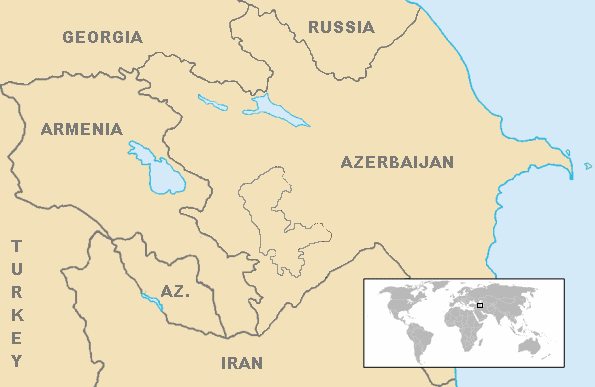Armenia and Azerbaijan have again accused each other of violating a Russia-brokered ceasefire in Nagorno Karabakh, which was the second attempt to quell almost three weeks of clashes that have killed hundreds of people.
The foreign ministries of Armenia and Azerbaijan said they would declare a "humanitarian truce" from midnight (as of October 18, 00h00 local time), by publishing almost identical statements just before midnight on Saturday October 17.
Within hours of the new ceasefire coming into force, both Armenia and Azerbaijan said the other side failed to comply with the truce at night.
The new ceasefire announcement came after Russian Foreign Minister Sergei Lavrov held phone talks with his counterparts from Armenia and Azerbaijan and stressed "the need to strictly follow" a ceasefire deal agreed in Moscow last Saturday October 9, Russian foreign ministry said.
Read more: Why don’t Azerbaijan and Armenia actually want ill-timed Russian-imposed ceasefire?
On October 17, Azerbaijan said 13 civilians were killed and over 50 wounded in the city of Ganja by a nightly Scud ballistic missile attack. The city of Ganja lies 100km (62 miles) from the frontlines of Nagorno Karabakh conflict. There were 3 children among the dead and 5 among the wounded.
A Soviet-made Scud (R-17) tactical ballistic missile destroyed or damaged about 20 residential buildings in the city, the Associated Press reported. Radio Free Europe said the missile strike in the early hours of October 17 hit a residential area in the densely populated city while people inside were sleeping.
Armenian authorities have neither denied nor accepted the responsibility, but the separatist authorities in Nagorno-Karabakh put out a statement listing alleged “legitimate” military facilities in the city of Ganja, although they stopped short of claiming direct responsibility for the attack, the Associated Press reported. Azerbaijan insisted Scud missile launchers only exist in the territory of Armenia, and couldn’t have been fired by the separatists.
Nagorno Karabakh, internationally recognised as part of Azerbaijan, but populated by ethnic Armenians, has been the scene of deadly clashes since 27 September.
According to an official, but partial, toll more than 700 people have been killed in the clashes.
The mountainous western region of Azerbaijan which include Nagorno Karabakh of about 4,400 sq km (1,700 sq miles) and some surrounding areas of of about 8,004 sq km (3,090 sq miles) has remained under separatist Armenian control since a 1994 ceasefire ended a brutal war that killed 30,000.

Read more: If you want to make sense of the war raging between Armenia and Azerbaijan, you can read the Azerbaijan & Armenia explainer: All you need to know [in layman’s terms].






